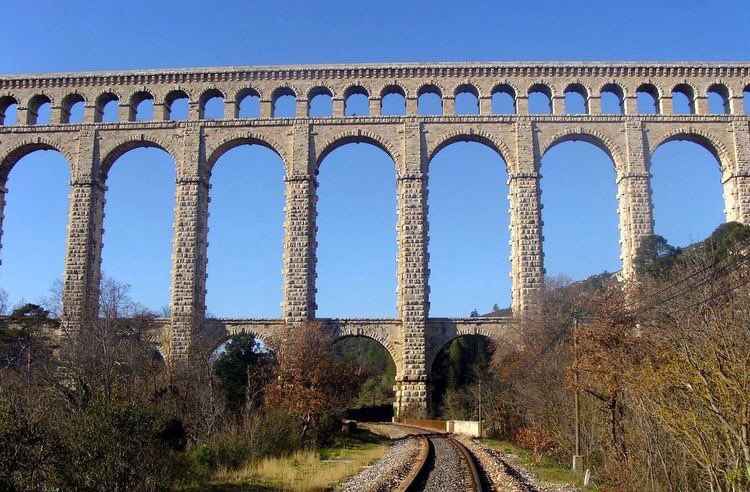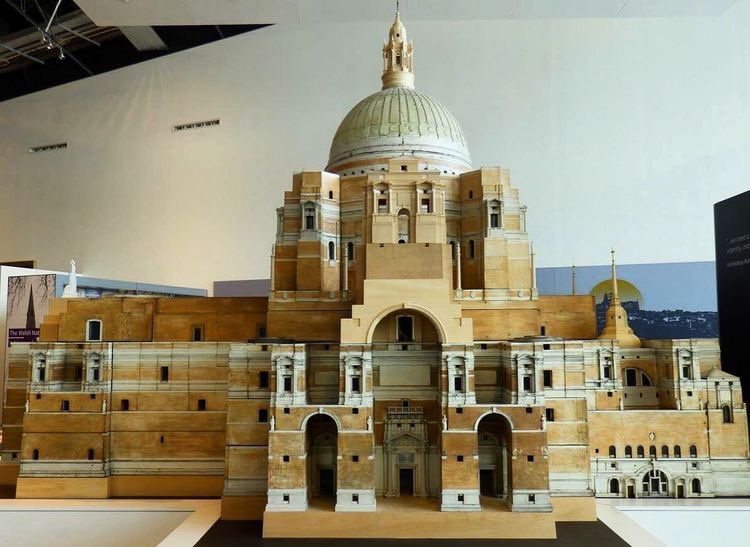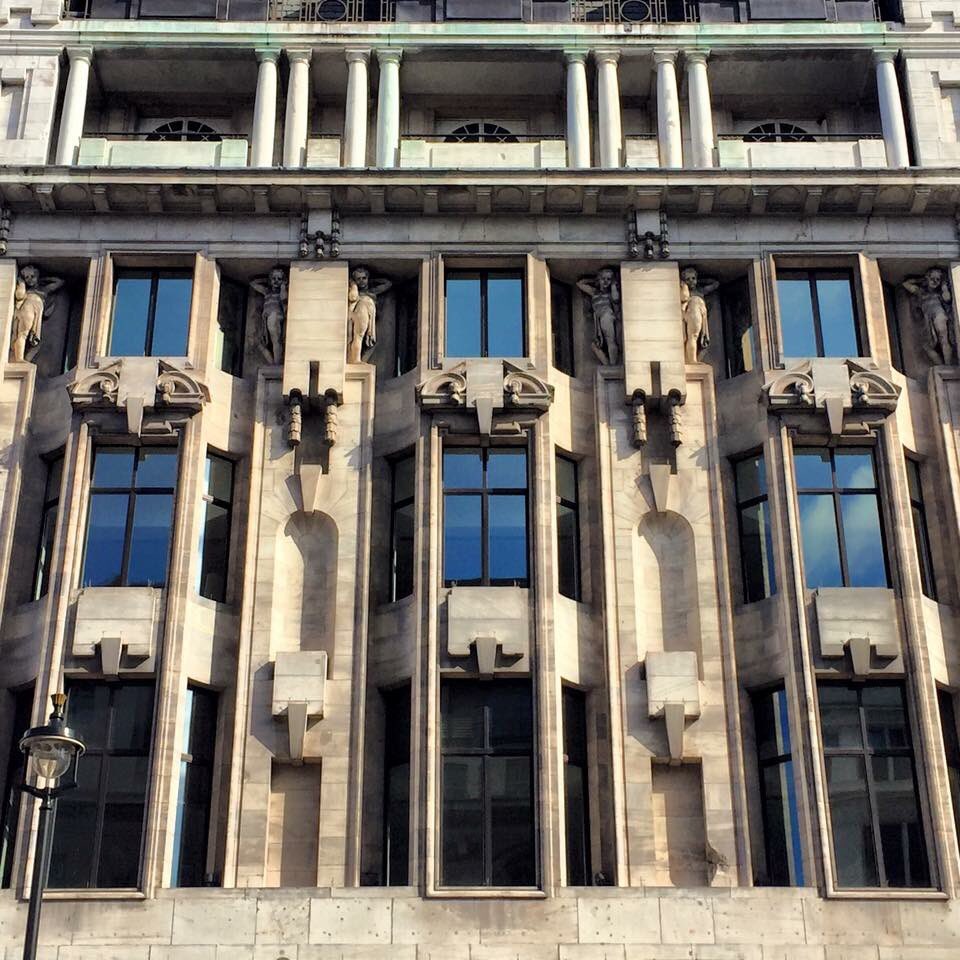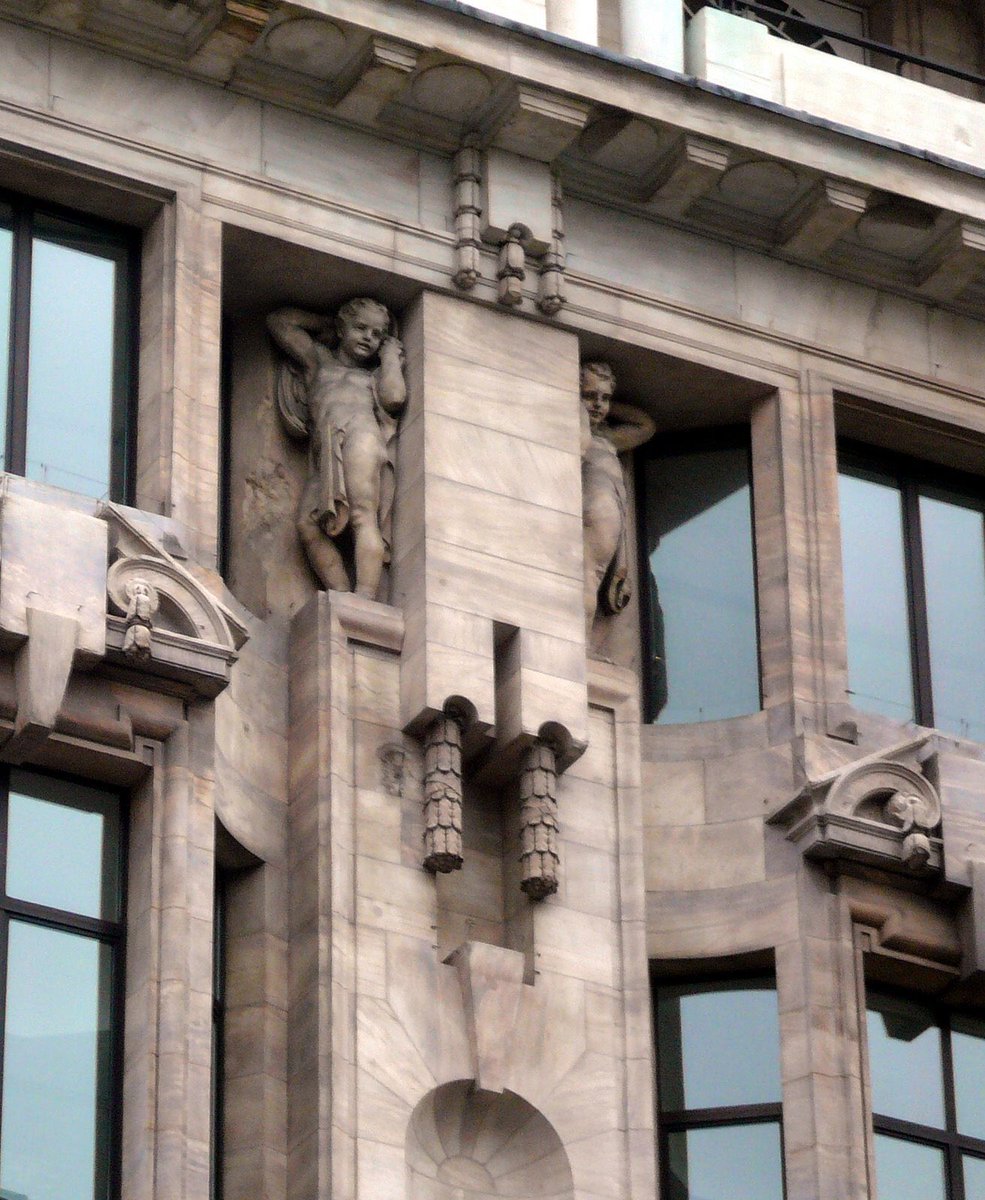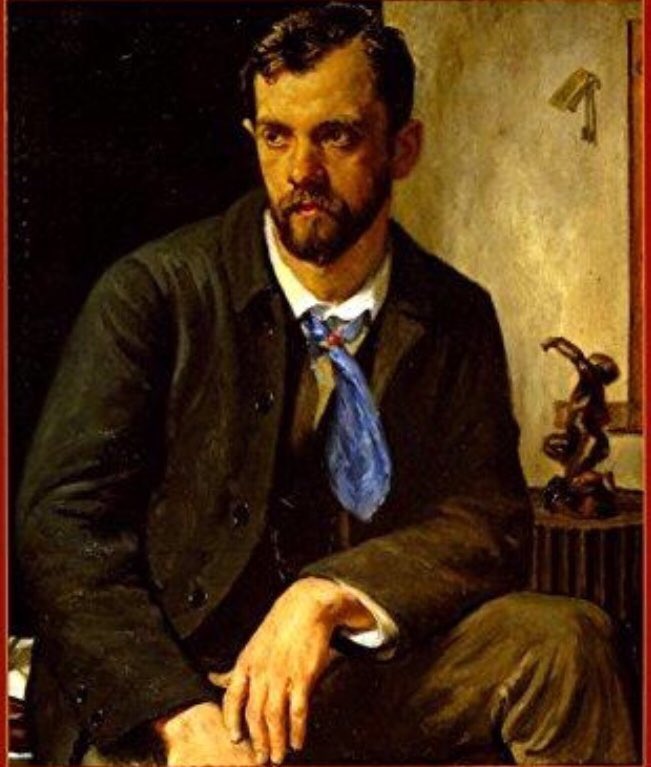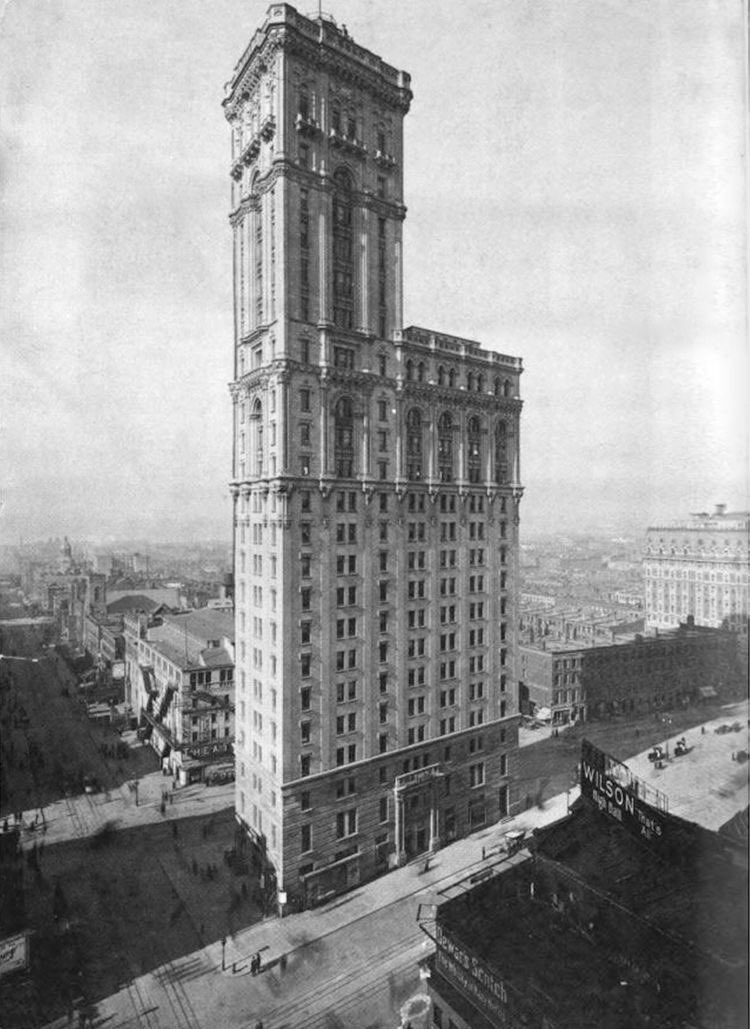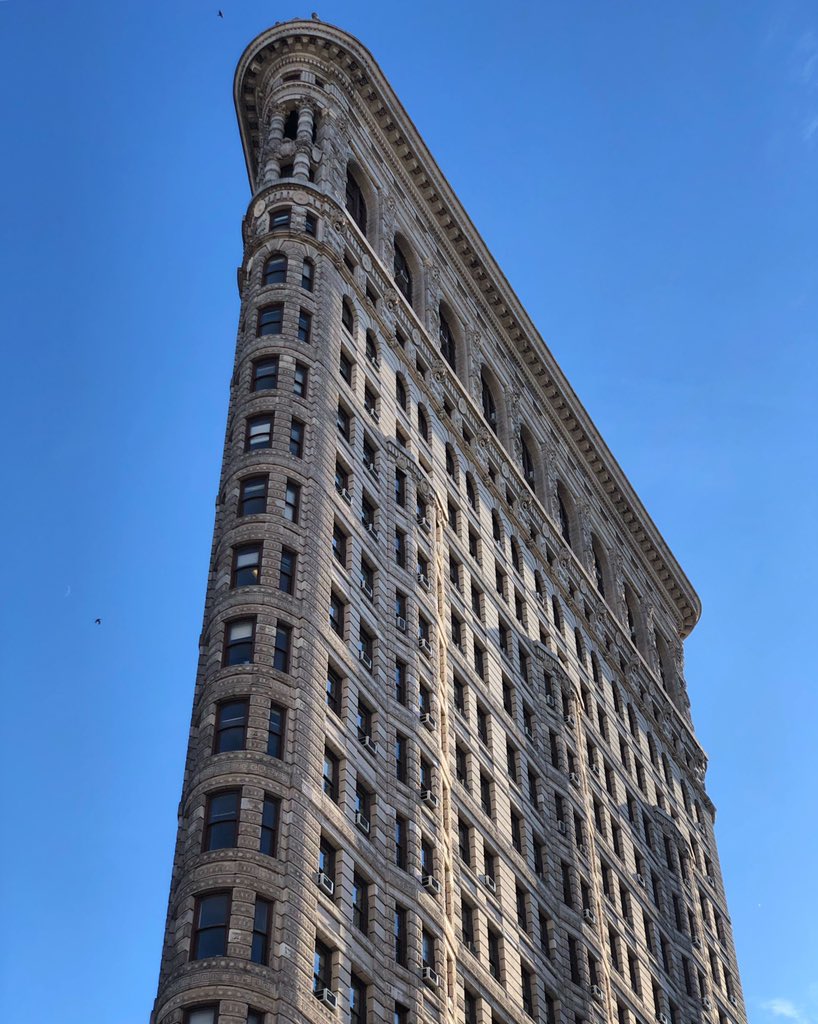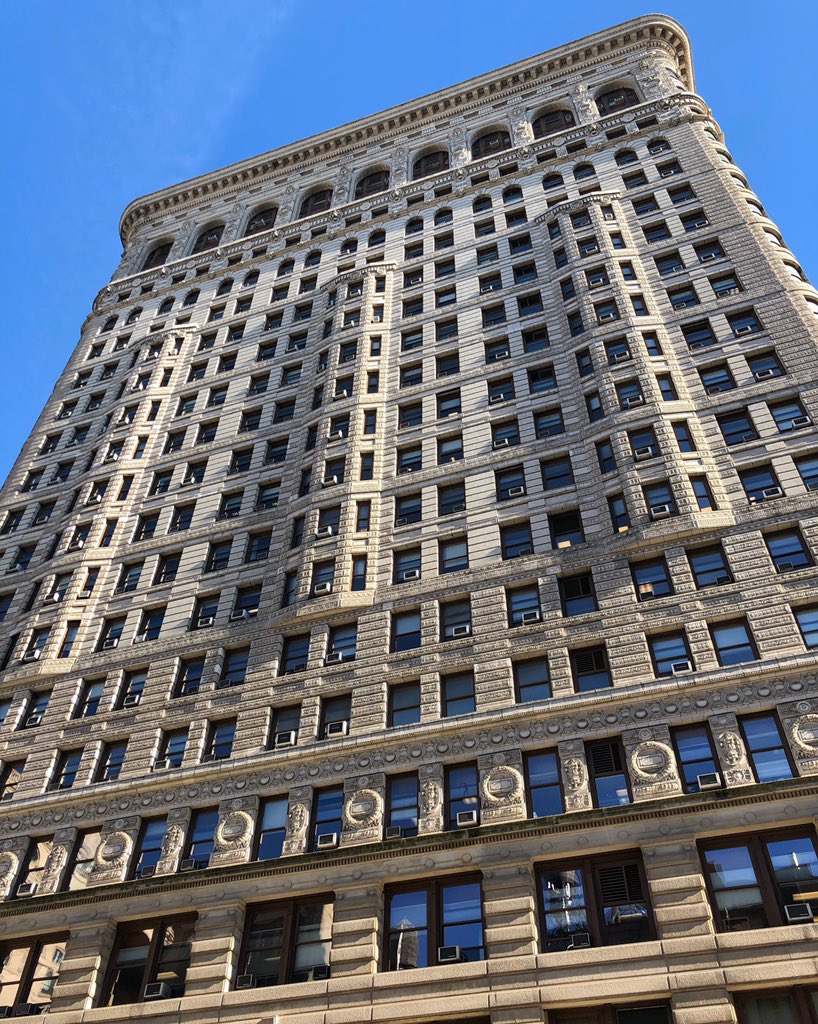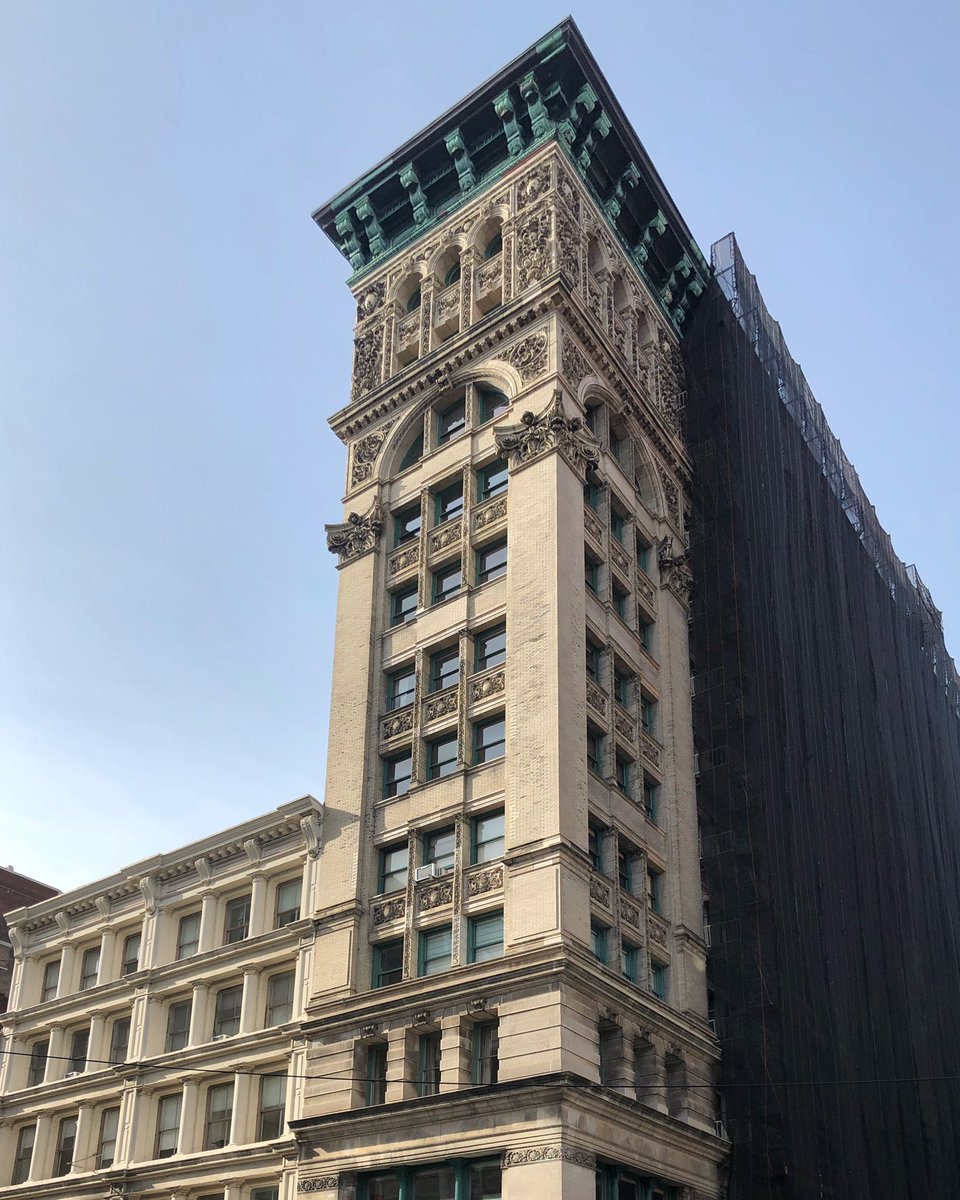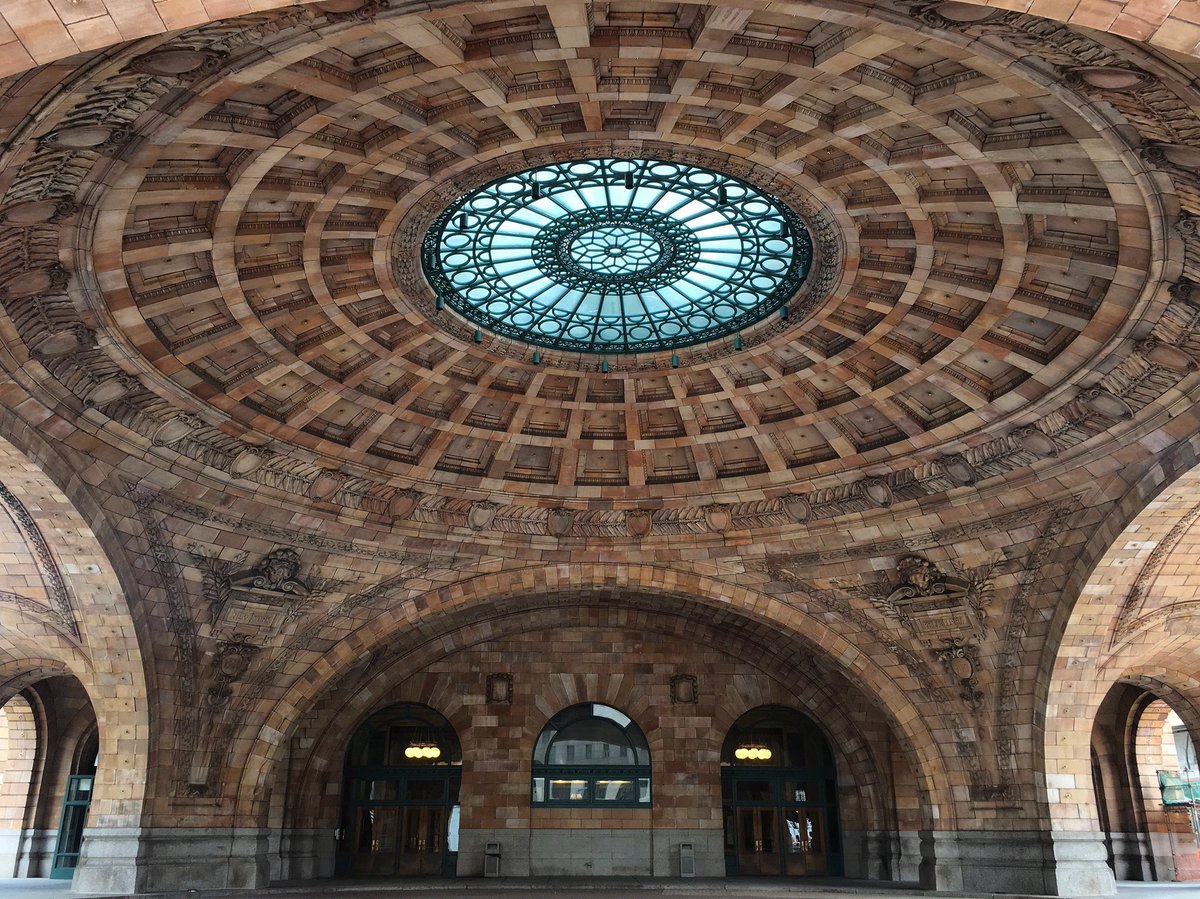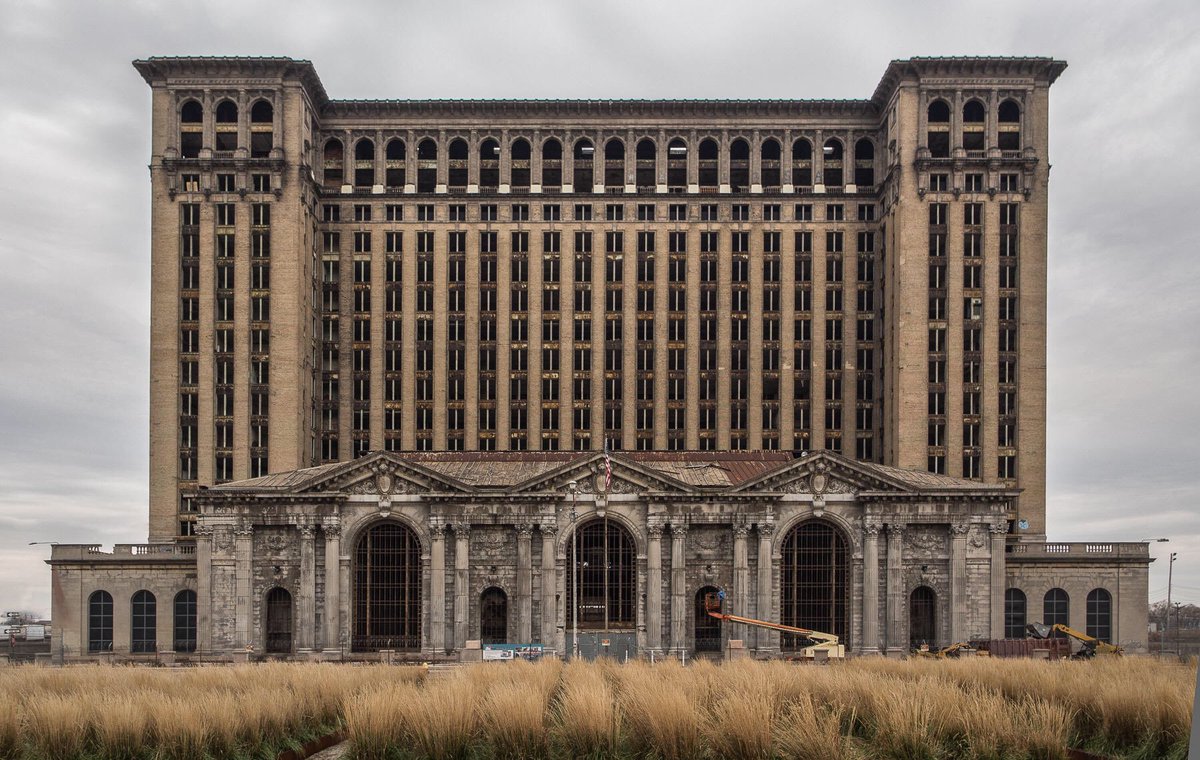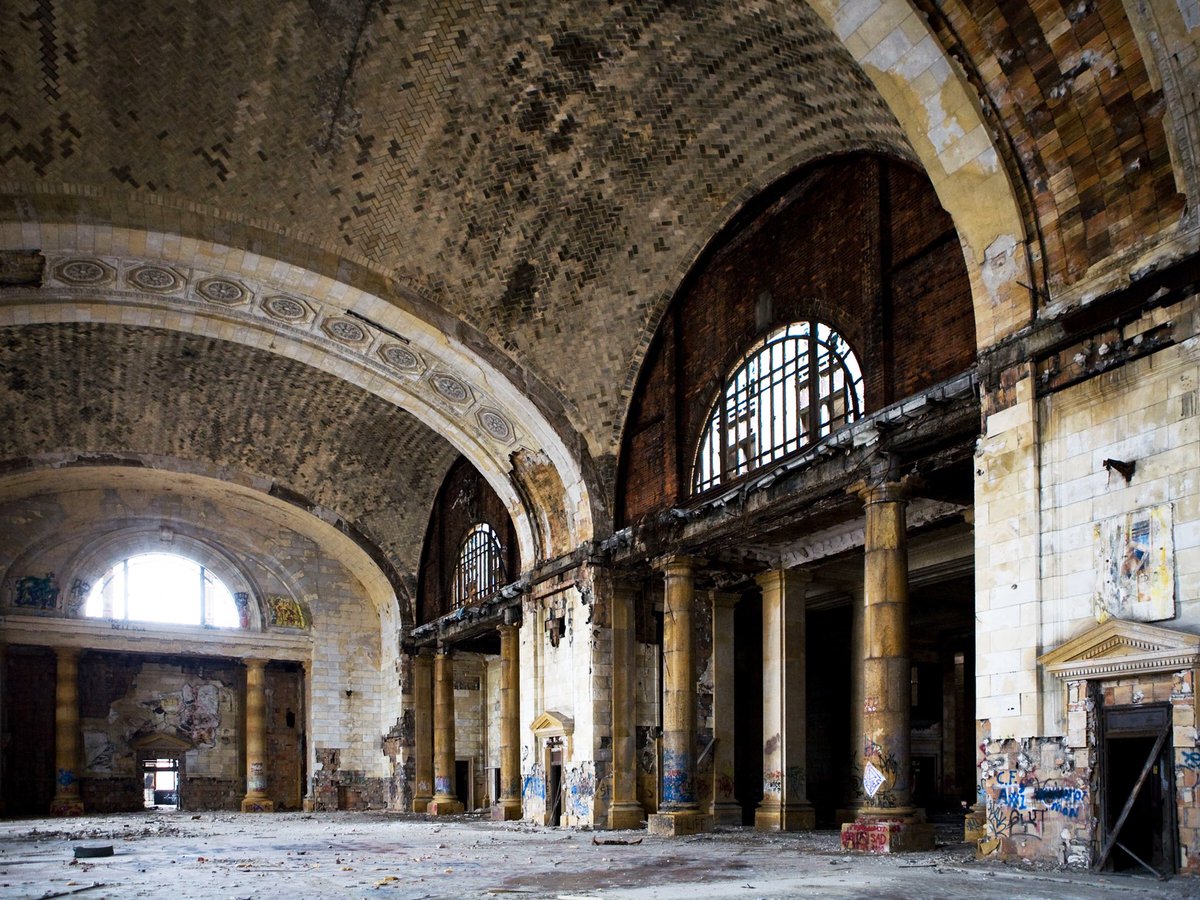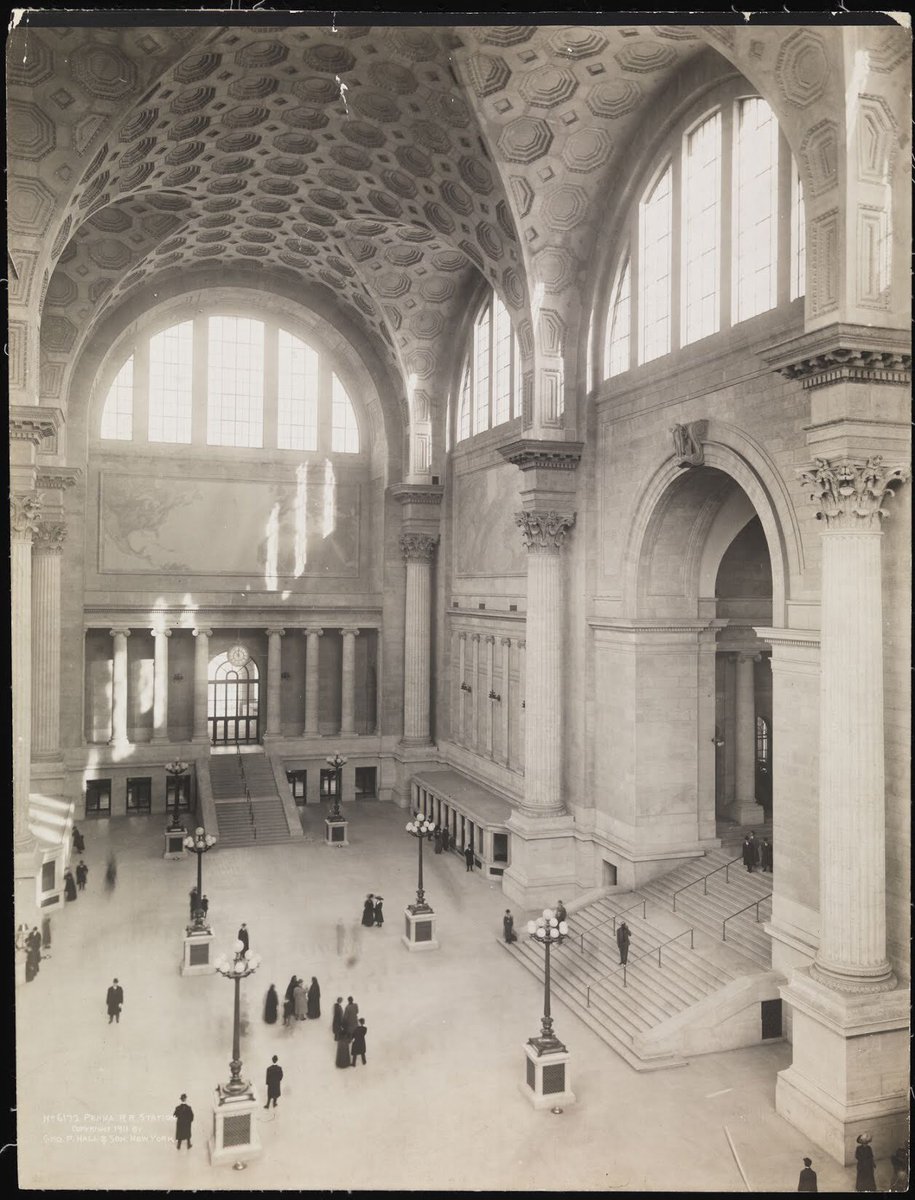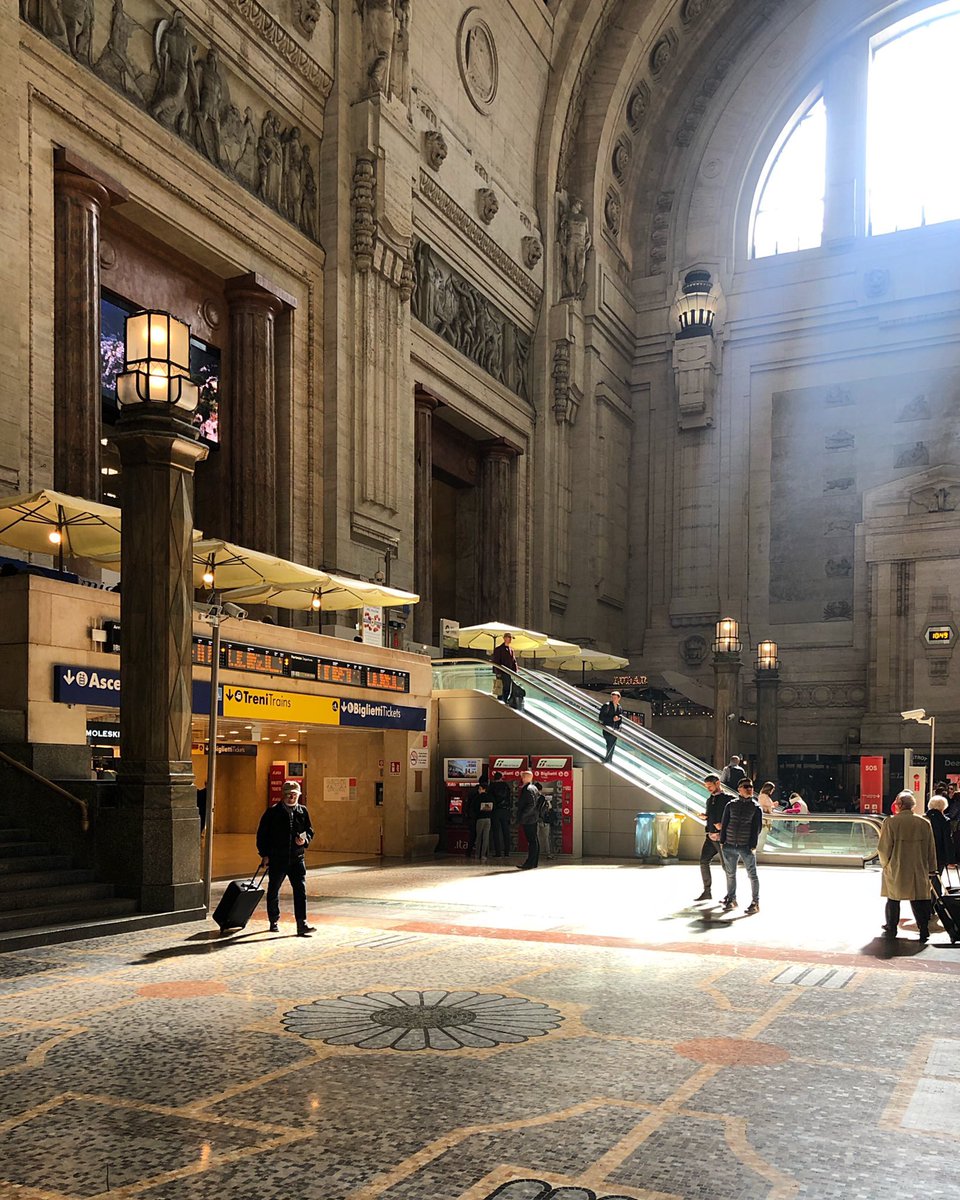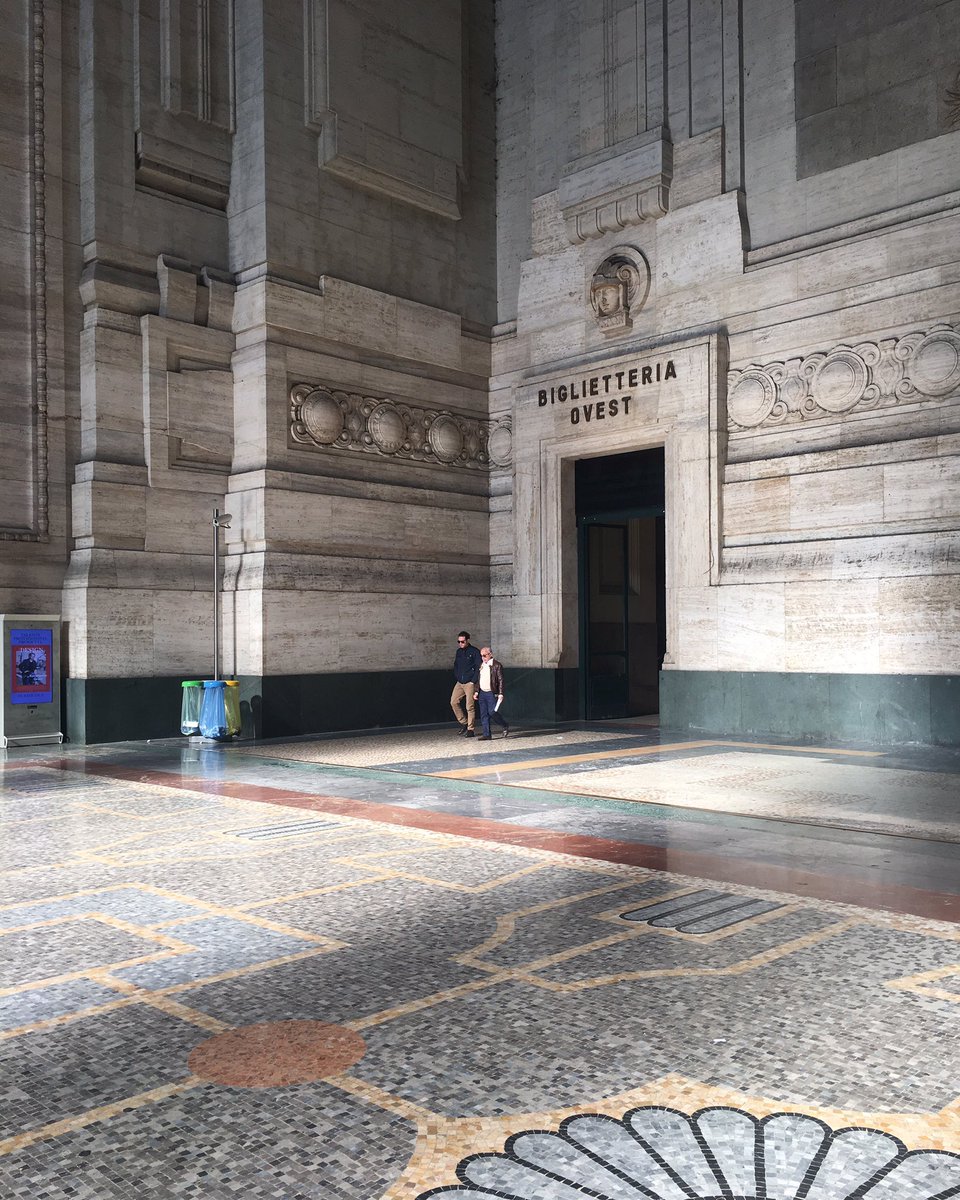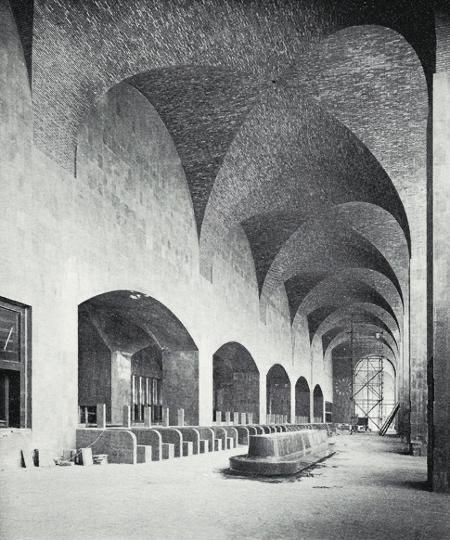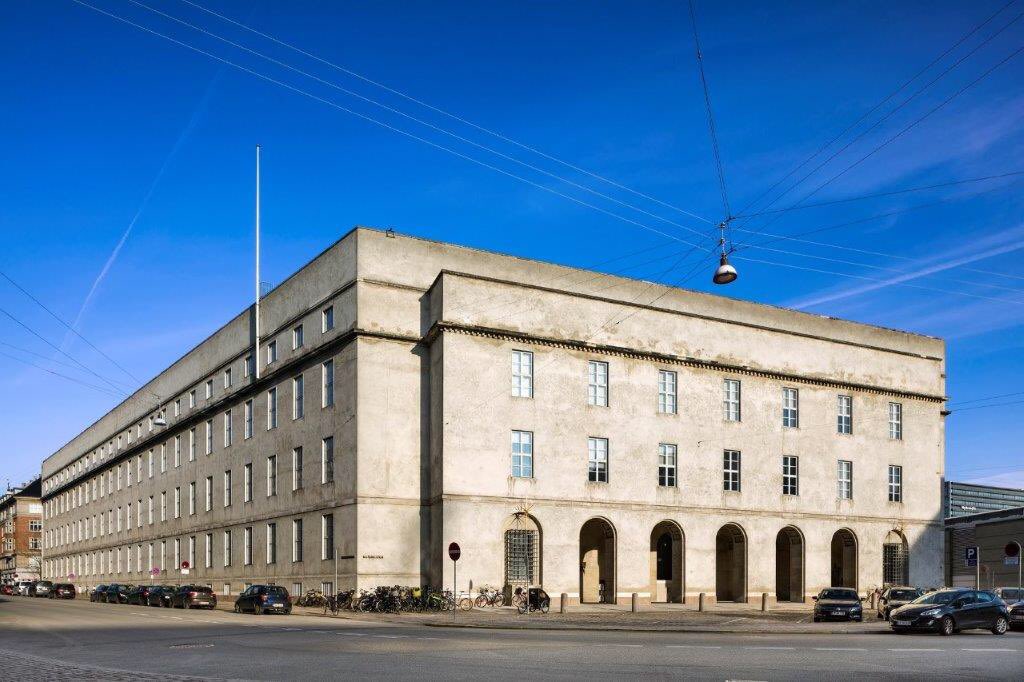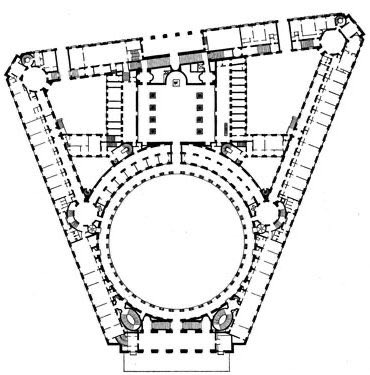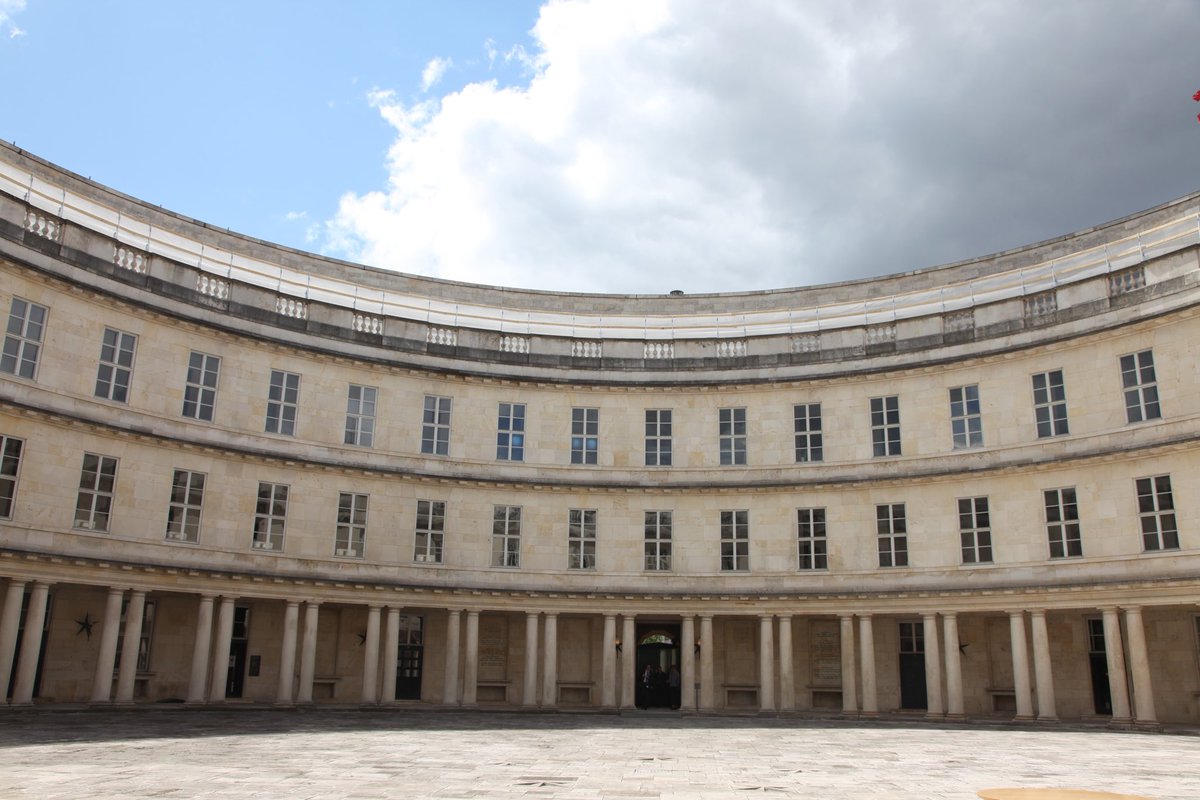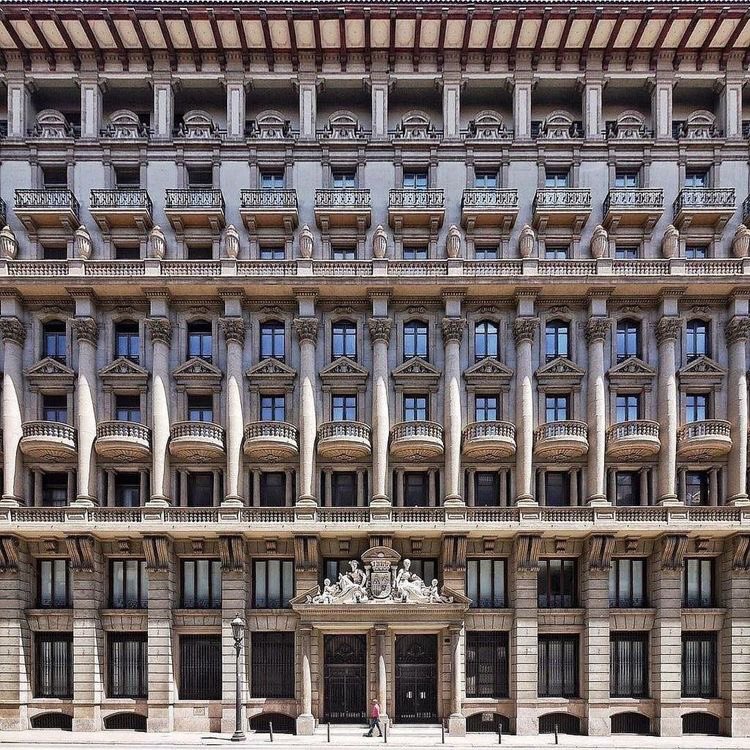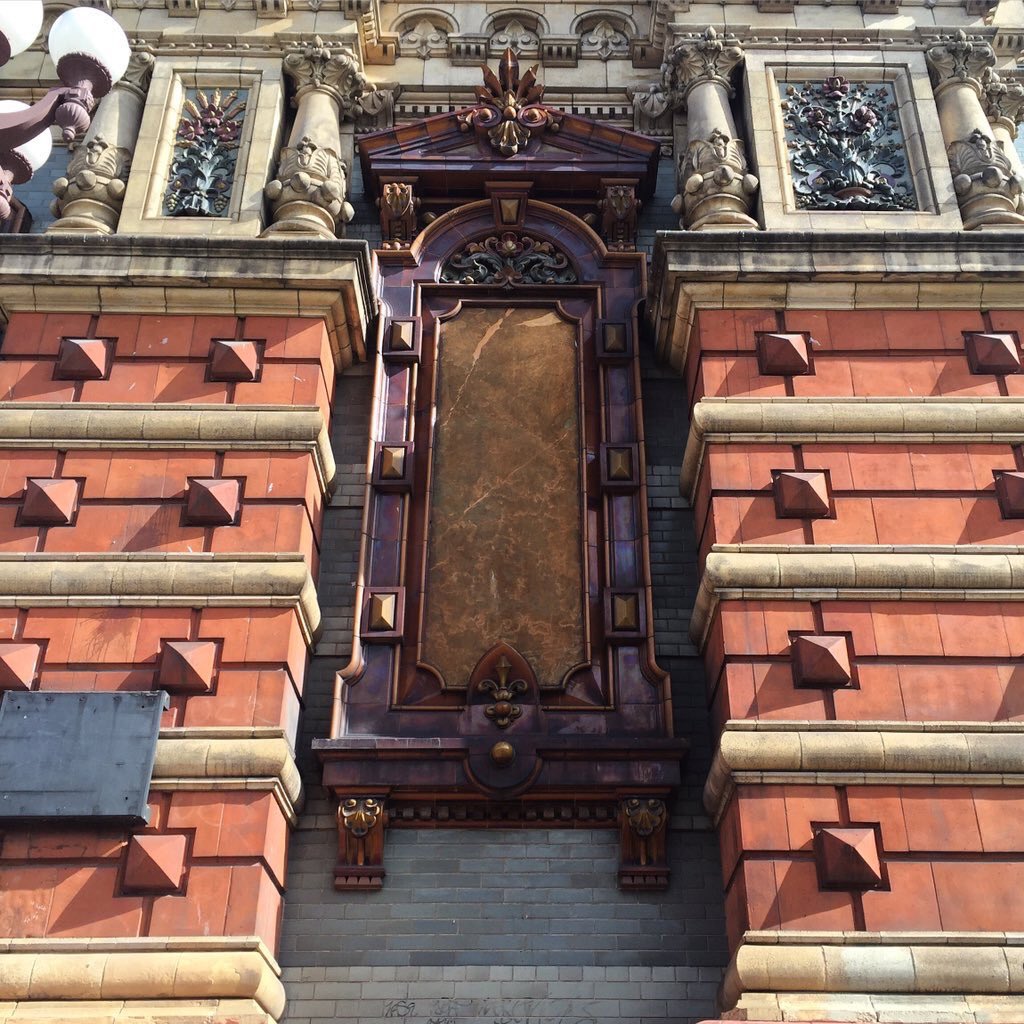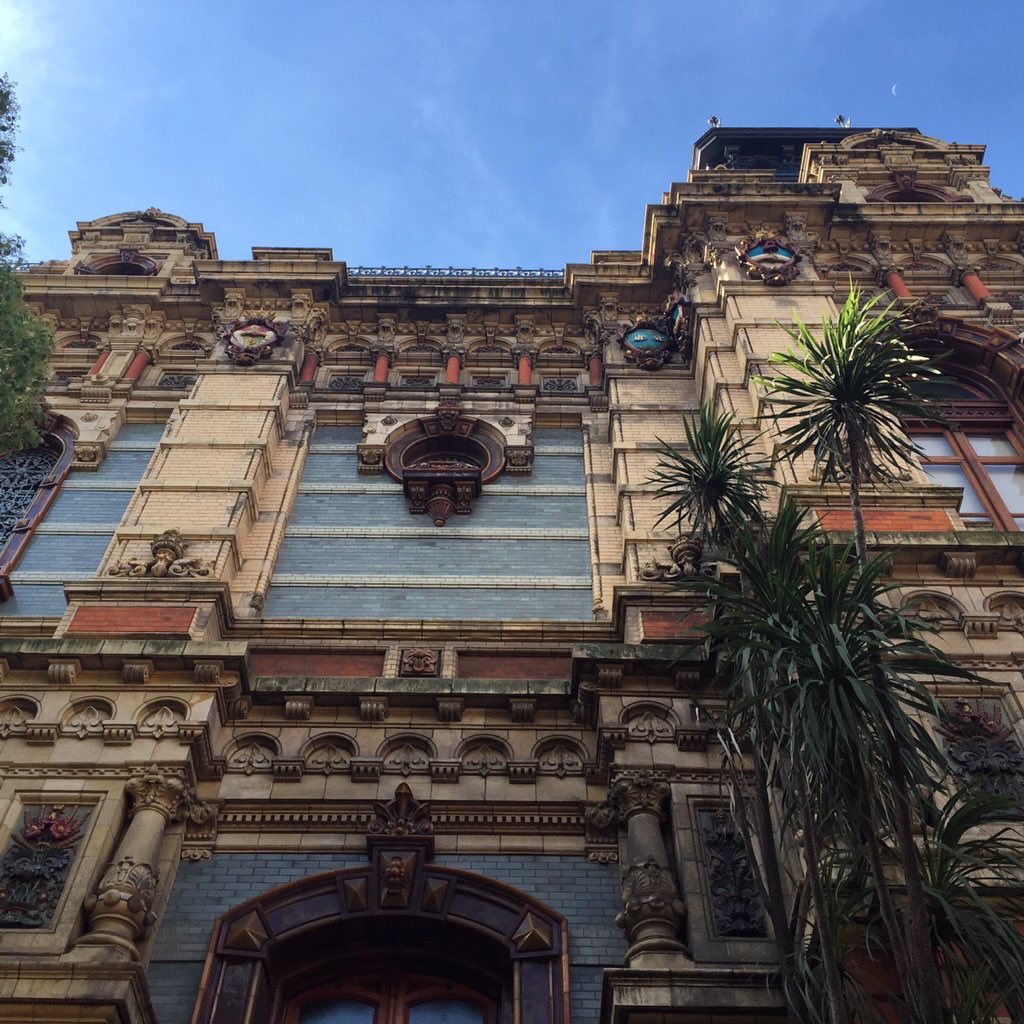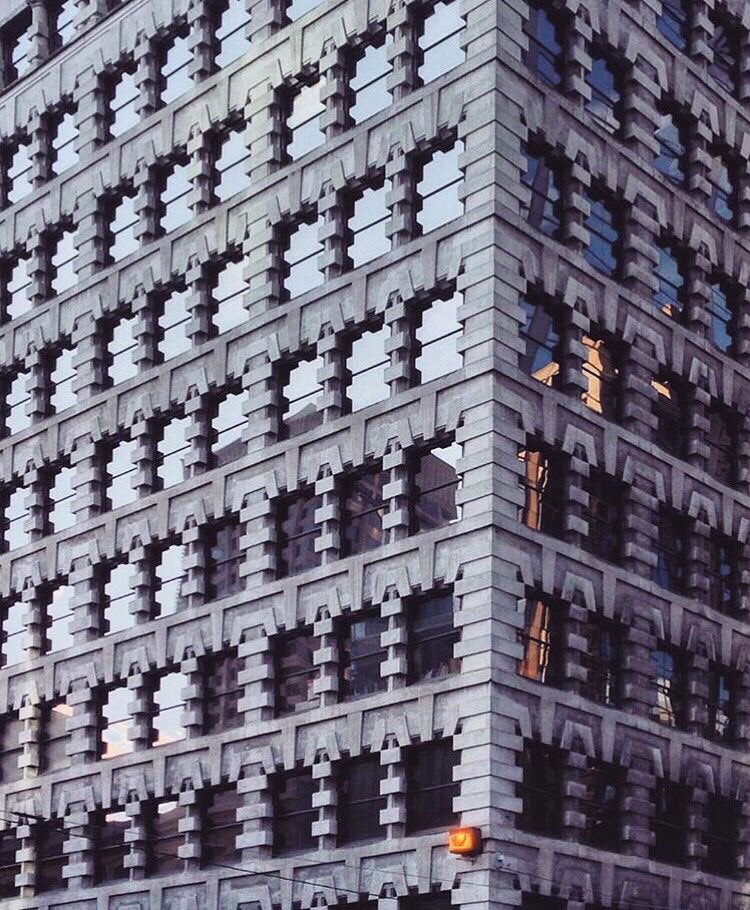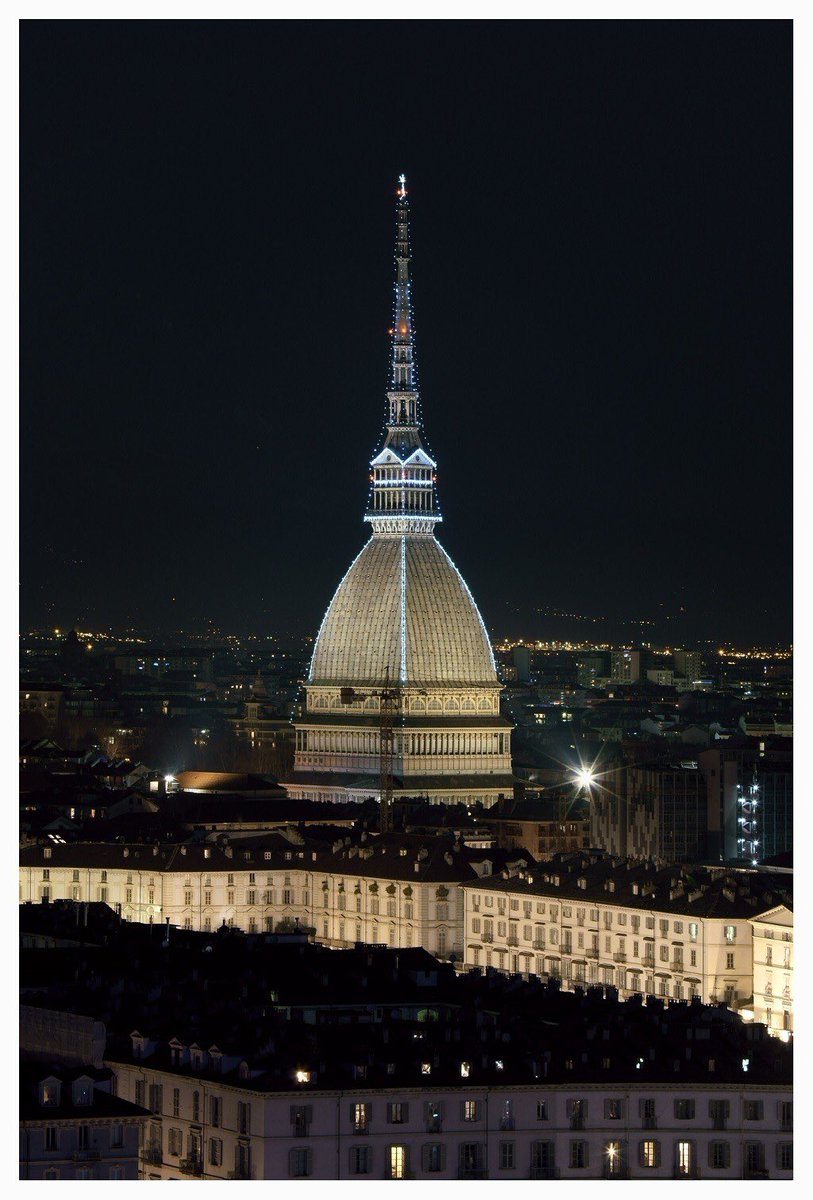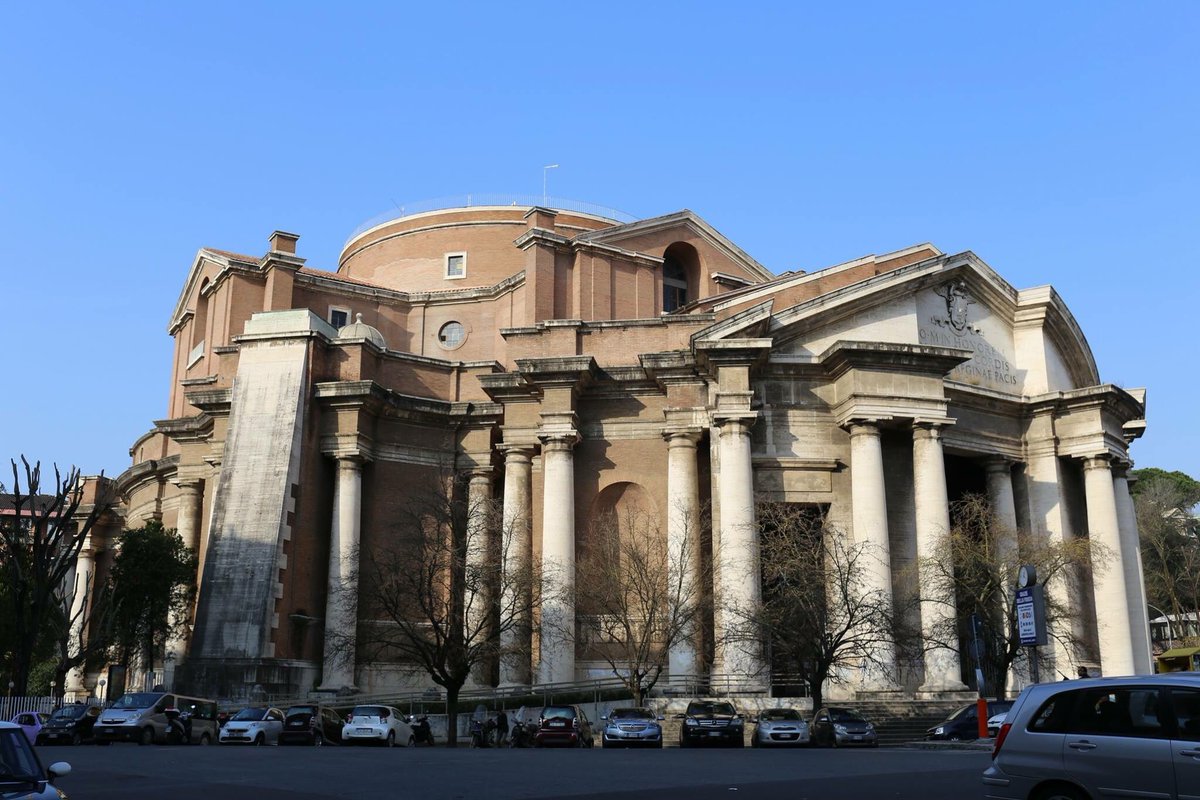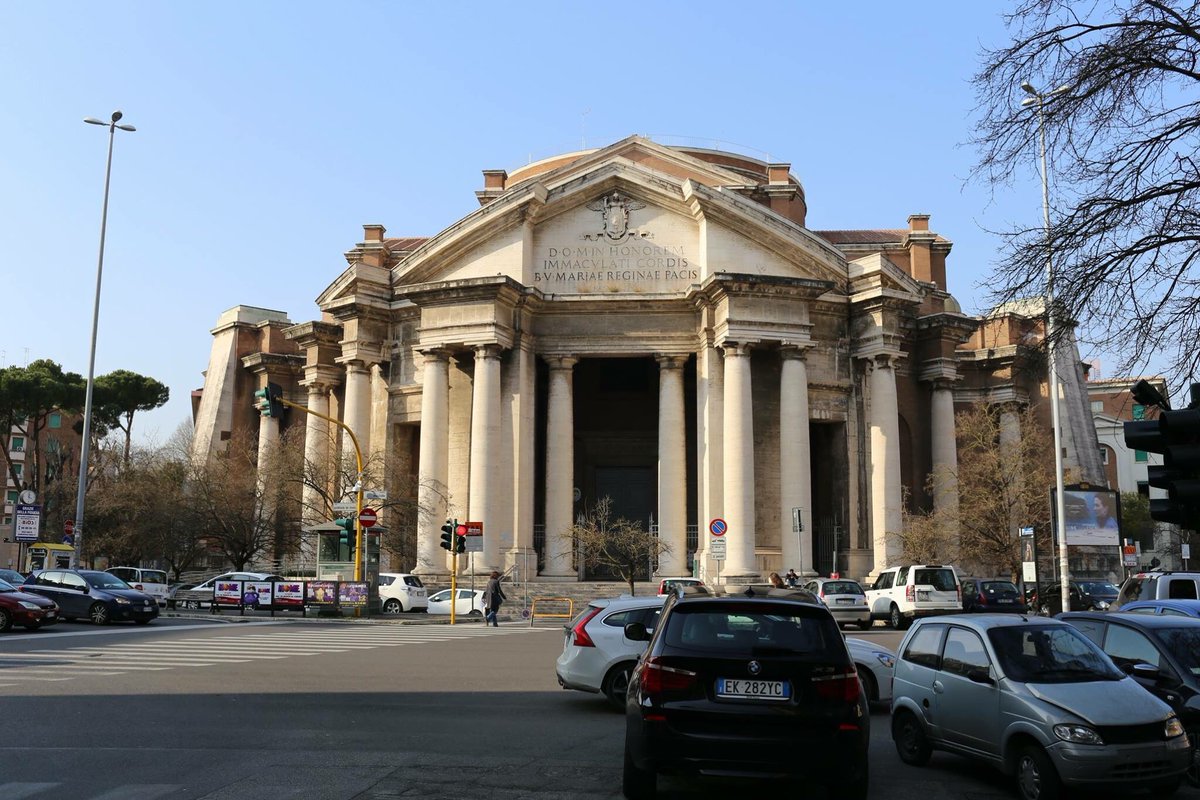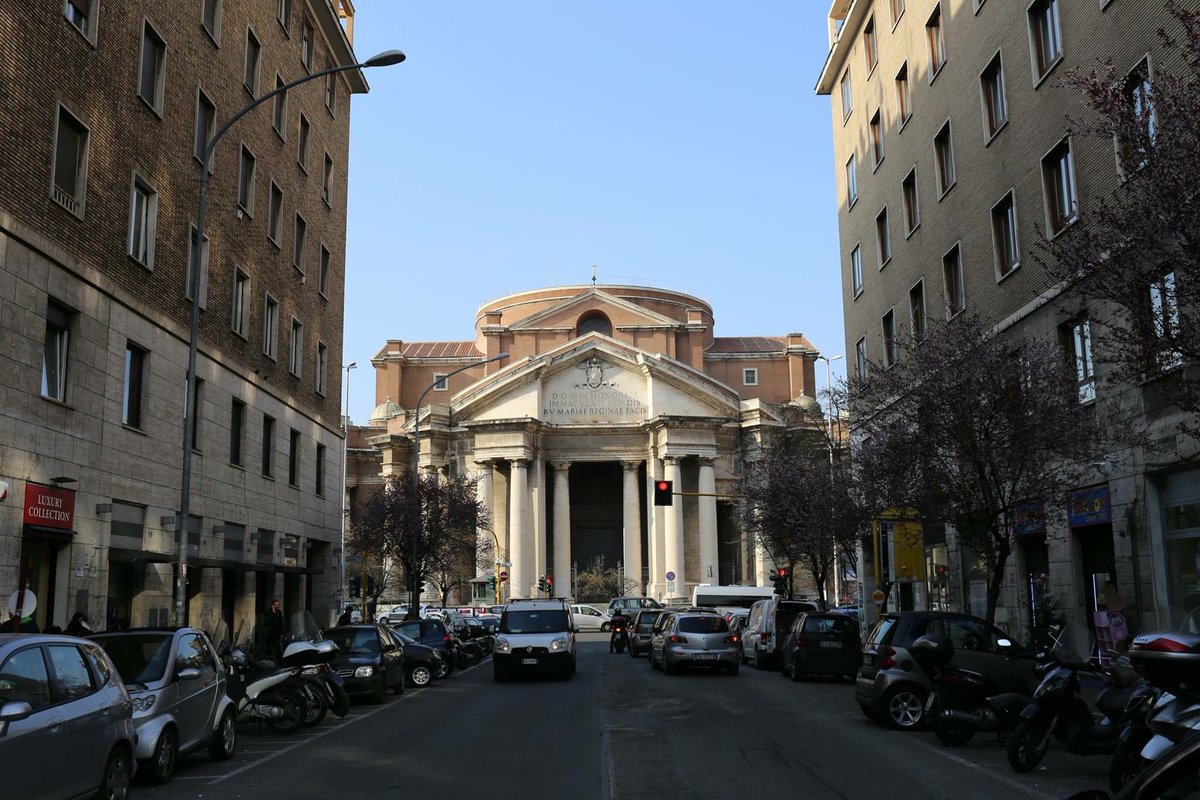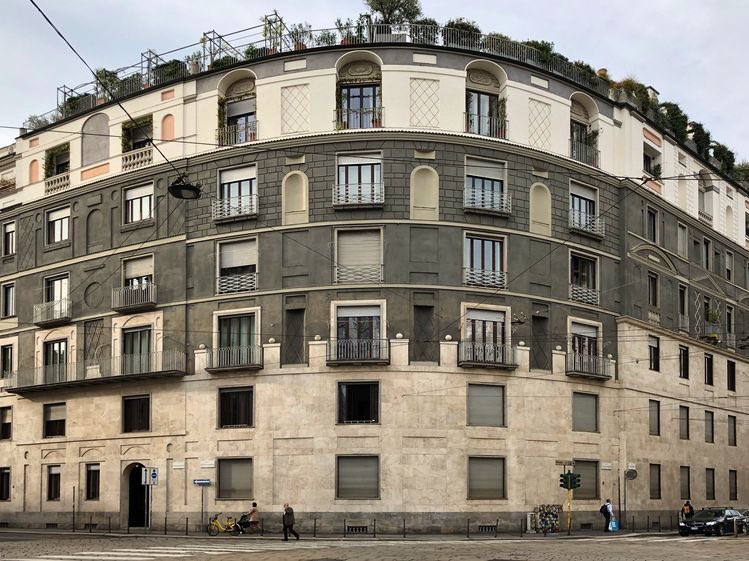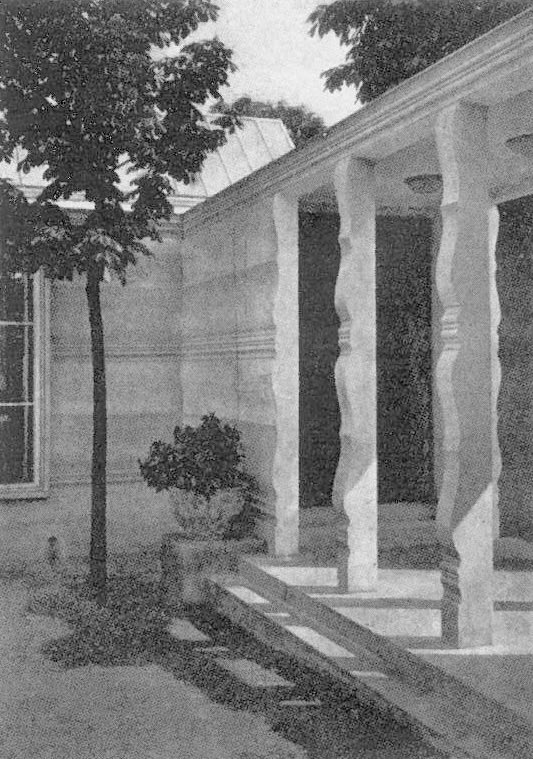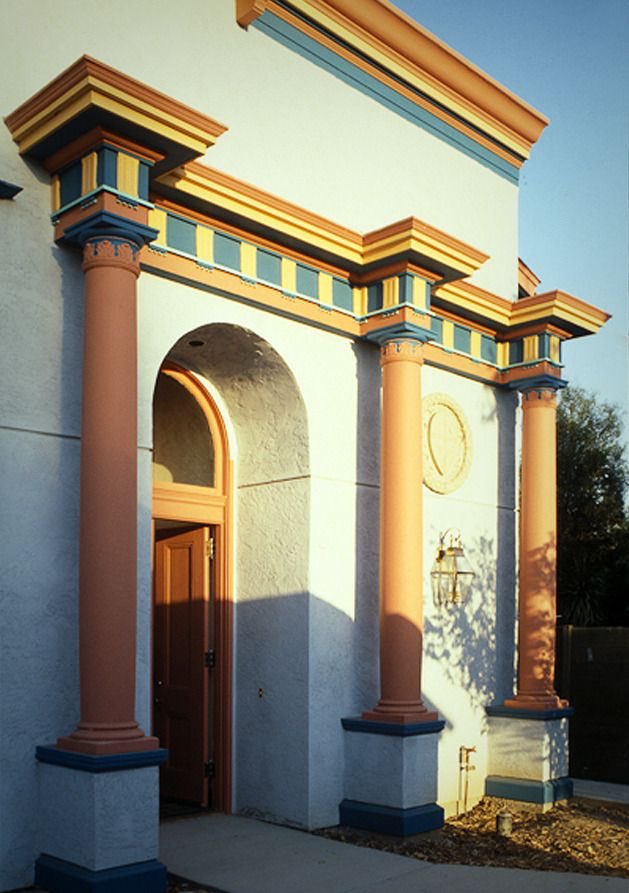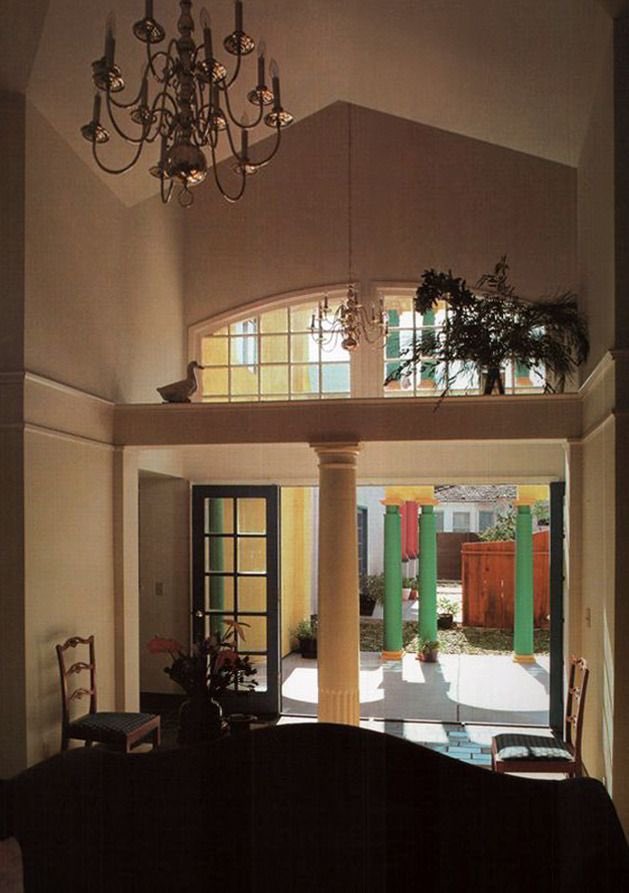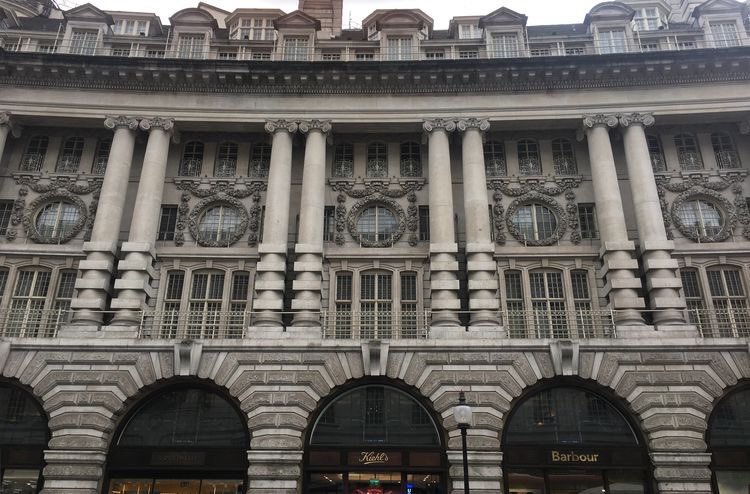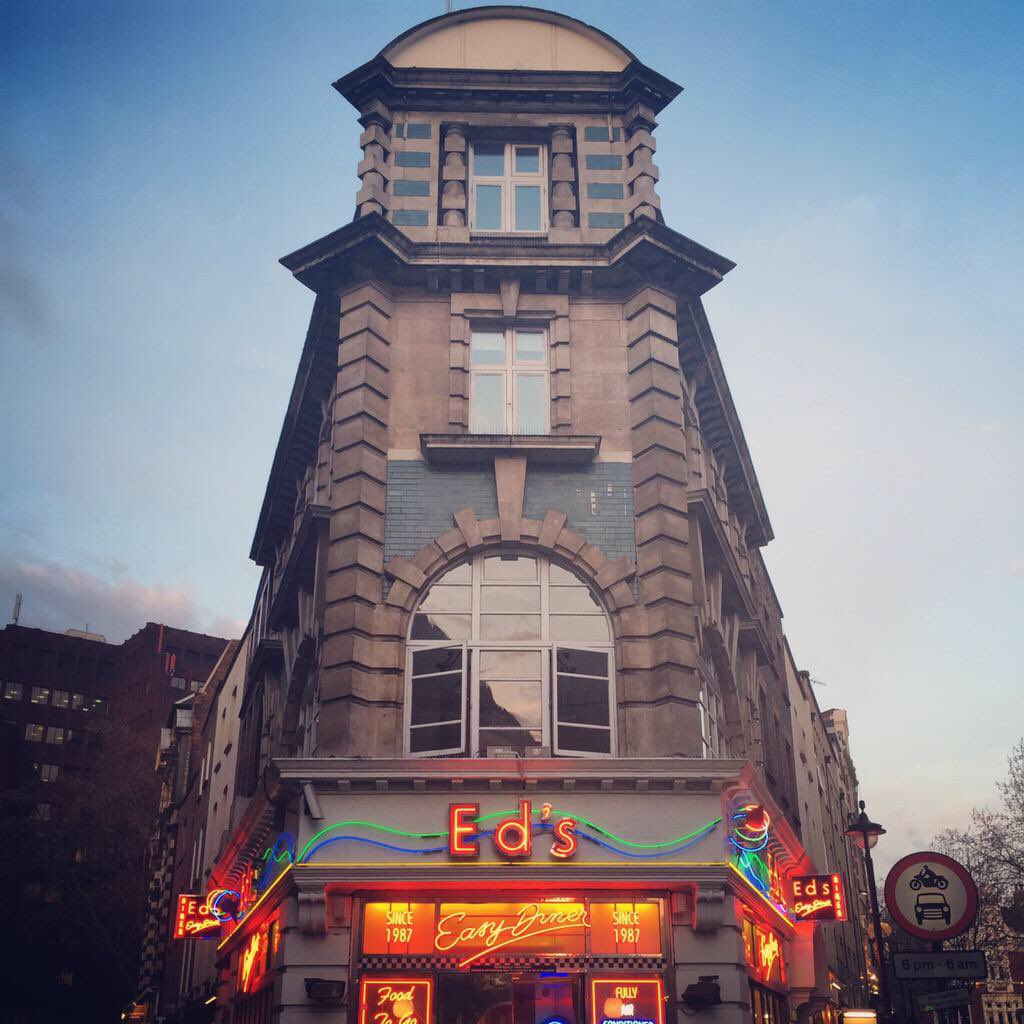THREAD: The classical language of architecture has come to be thought of as at best pedantic & at worst reactionary, but both its contemporary detractors & fans often ignore the incredible richness & contradictory complexity of its use to embody all kinds of meanings in the past
Creatively reinventing its own language, breaking its own rules and reformulating them for different contexts & circumstances again and again in ways contemporary ‘traditionalist’ practitioners rarely touch upon... from great temples to capitalism, to monuments to fascism, stalin
to Napoleon to the Republic of France, small businesses, organs of tbe state, regions asserting independence to symbols of colonial power, the big, the bad, the small and the good and everything in between... this thread will be a smorgasbord of examples from ‘modern times’...
1st tweet was the Detroit Book Tower, Louis Kamper, 1916-26. The second was the Borsa Italiana, Palazzo Mezzanotte, Milan, Paolo Mezzanotte, 1932 (during Mussolini’s regime), & the last was the Roquefavour Aqueduct, Jean François Mayor de Montricher and William Fraisse, 1847
Image of the book tower from: https://m.9gag.com/gag/agn1mzK/abandon-book-tower-at-476-feet-tall-or-38-stories-high-located-in-detroit">https://m.9gag.com/gag/agn1m...
The great model of Lutyens& #39; Liverpool Catholic Cathedral (1930-58), only the crypt of which was ever completed, and one of the greatest and mostt inventive of classical compositions of all time...
I am a sucker 4alot of Edwardian classicism, a particularly fertile period of fusion &experimentation in my eyes, here is mannered gotham classicism, the Royal Insurance office in Piccadilly, London by James Joass 1907-9. 2nd image from this great blogpost http://ornamentalpassions.blogspot.com/2008/06/161-piccadilly.html?m=1">https://ornamentalpassions.blogspot.com/2008/06/1...
Charles Holden did incredible, strange things in London, including the British Medical Association (now the Embassy of Zimbabwe), Charles Holden, 1907-8, with sculptures by Jacob Epstein
He was also responsible for Senate House, London, 1932-7, which has inspired the imaginations of many generations of writers & architects with its incredibly sculptural mass, at once seeming impossibly tall, and incalculably heavy...
Some call Lutyens the last great classical architect, but many of the world’s most inventive architects were using the language with intense creativity well into the 20th C. This is the Australian National Memorial, Villers–Bretonneux, by Lutyens, 1938
B&W photo by Max Bonhomme
B&W photo by Max Bonhomme
His memorial architecture is unsurpassed, full of gravitas and solemnity, but also wildly wilful, one could never imagine a contemporary rules-obsessed classicism pedant ever in a million years coming up with compositions like this... Thiepval Memorial, Edwin Lutyens, 1928-32
I am a total sucker for the almost incomprehensible vigour and confidence of commercial & infrastructural classicism from the late 19th & early 20th C in North America... this is Wabash Terminal, Theodore Carl Link, Pittsburgh, PA, 1905.
Gutted by fire in 1946 & demolished 1953
Gutted by fire in 1946 & demolished 1953
Buildings that Europeans (much as we now scoff at China) often found uncouth and vulgar, now in retrospect look like incredibly strange & interesting fusions of tradition and thrusting modernity... One Times Square, Cyrus L.W. Eidlitz, Andrew C. McKenzie, NYC, 1904
And of course then there are examples from amongst them that no matter what, even the snobbiest must recognise as incredible masterpieces of commercial and artistic vim.. the Flatiron Building, NYC, Daniel Burnham, 1902
My favourite place to walk around and just get a feel for the diverse takes on the classical language of architecture that sprouted in the US is Soho in New York, where an incredible number, often with stunning terracotta facades, still survive making up a whole urban context
The great railway age was also marked by intensely novel ways of deploying the classical language, here the old port cochere of Pittsburgh Union Railway Station, D.H. Burnham & Company, 1903
And of course the greatest of them all, the sadly demolished (1963) Penn Station in New York by the great McKim, Mead & White, 1910
One still extant station that truly gives Penn a run for its money, and no doubt the most gargantuan, Lord of the Rings kind of classicism ever created, is Milano Centrale, by Ulisse Stacchini, 1912-31
Rome’s station is a very different take on the language, with Termini’s initial rear section being a textbook example of the kind of stripped-back classicism that became so dominant in Italy of the 1930s (and which is currently very fashionable amongst architects)
There are endless examples of this stripped back approach (of Romanitá) spearheaded by Marcello Piacentini, but the most iconic is the Palazzo della Civiltà Italiana in Rome by Giovanni Guerrini, Ernesto Bruno La Padula and Mario Romano, & constructed between 1938 and 1943
Aside: This is me in the middle of Sicily where i randomly met the granddaughter of Ernesto Lapadula, one of the architects of the Palazzo Della Civilta Italiana...
Stripped-back classicism had many regional incarnations, but the Scandinavians did it rather well too. This is the Police Headquarters, Politigården, by Hack Kampmann, in Copenhagen, 1918-22
Because theres a drum too, heres one of my favs, a postwar one, the Basilica di San Giovanni Bosco, Rome, by Gaetano Rapisardi, 1952-64.
Thrusting commercial classicism embodying new trades & building typologies was bot restructed to the US, this is the Treasury Headquarters aka State Tobacco Company, Barcelona, Francesc Guàrdia i Vial, 1923. Picture by StoptheRoc
South America, particularly Brazil & Argentina that were booming at the time, served up their fair share of ingenuity and weirdness. This is Palacio Salvo, by argentine architect Mario Palanti, Montevideo, Uruguay, 1925-8
-
Image from Wikipedia
-
Image from Wikipedia
This is the astonishing, utterly mesmerising ceramic clad Palacio de Aguas Corrientes water pumping station by Carlos Nyströmer in Buenos Aires (1894)... which reminds us just how wealthy & brimming with confidence the country was at the turn of the century....
The rather incredible play on column scaling at the vast Palacio de Tribunales (national law courts), Norbert Maillart, Buenos Aires 1905-10
The classical race to conquer the skies reach Brazil too, this is the Martinelli Building, Sao Paolo, Vilmos (William) Fillinger, 1922-29
But interesting thing ms were happening in Canada too, this is total Ledoux on steroids, The Lumsden building, Toronto, John A Mackenzie, 1909-10. The largest concrete-faced building in the world upon completion. Photo by Phillipe Fortin
Alessandro Antonelli was a maverick genius in Piemonte, Italy, who built sone of the most uncategorisable buildings of the 19th C, including this hybrid campanile-dome, the ‘cupola’ of the Basilica of San Gaudenzio, Novara, Piedmont, 1887
As well as the absolutely wild ‘Mole Antonelliana’, still the tallest building in Torino, intended as a Synagogue, the jewish community couldn’t afford to finish it after he repeatedly increased its size & height again & again during construction, 1863-1889
And this is him I guess being more sedate, but still managing to produce an incredibly uncanny and somewhat unnerving design... Santuario del Santissimo Crocifisso, Alessandro Antonelli, Boca, Piemonte, 1888-1970
A favourite of mine is another maverick who built alot, the italian Armando Brasini, who fused a language of classical ruination with baroque compositional tendencies, a bit how Kahn later joined the former with modernism... this is his Palazzo del Governo, Taranto, 1934
This is the Basilica del Sacro Cuore Immacolato di Maria, Parioli, Rome, by Armando Brasini, 1923-51, which shows that coming together of monumental ruination with baroque urban form very well...
Giovanni Muzio was another great Italian innovator with the classical language, this is his (still after all these years) utterly incomparable Ca Brutta, Milan, 1919-22
Austrian Pavilion at the Intl Exposition of Modern Industrial and Decorative Arts, Josef Hoffmann, Paris, 1925
Peter Behrens utilised classicism in well worked out & unusual manners, approaching it in a range of ways, here in dramatic Art Nouveau guise in his Vestibule for the Esposizione Internazionale de Arte Decorativa Moderna in Turin from 1902
And now to another extreme, I adore the camp & saturated incarnations of classicism & Thomas Gordon Smith’s warly work is up there, here with his Tuscan & Laurentian Houses, Livermore, California, 1979
Industrial and quotidian american infrastructure showed endless incentiveness as well, here is the Washington Park Fireproof Warehouse, Chicago, by Argyle E Robinson
And look at these incredible arches on a piece of ‘utilitarian’ public infrastructure, on the Manhattan Bridge, by Leon Solomon Moisseiff, 1901-12
I am a huge Richard Norman Shaw fan, his wonderfully free use of expressive & eclectic classicism... here is his design for London’s Regent St, only one section of which was finished, and a perspective of the entire scheme (completed in stripped-back form by Blomfield)
This is one of Sir Reginald Blomfield& #39;s gorgeous archways over Air St as it crosses Regents St, 1923-8, a modification of Shaw’s earlier -extremely expensive- proposal. These massive bridges are some of the most dramatic moments in London architecture...
This is the utterly wonderful Picadilly front of the Piccadilly Hotel, London, by Richard Norman Shaw, 1905–08 Photo by @gilliandarley
1 of the remaining parts of the Regent Palace Hotel, which was the largest ceramic-clad building in the world, the largest hotel in Europe, & 1 of a generation of turn of the century mega hotels in London, W J Ancell, Henry Tanner Junior, & F J Wills, 1912-15
There is alot of small but unbelievably eccentric and beautifully executed Edwardian baroque built by small developers, businesses & individuals in the UK, here is one of my favourites, 295 Charing Cross Road by C H Worley, 1907. 4th image from: https://www.flickr.com/photos/warsaw1948/6924308553">https://www.flickr.com/photos/wa...

 Read on Twitter
Read on Twitter

